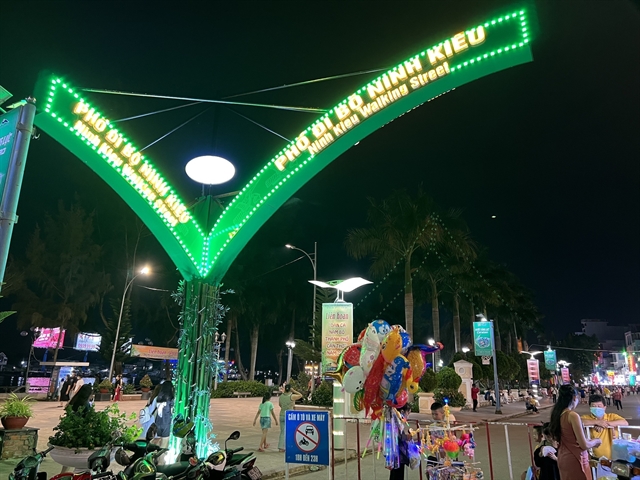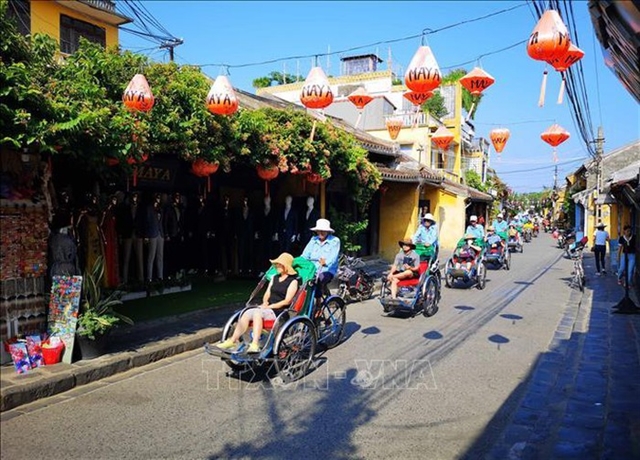 Life & Style
Life & Style

The central coastal province of Quảng Nam has set a target of serving 8.1 million tourists in 2020 and continuing to enhance tourism products' quality.

|
| Foreign tourists visit Hội An. — VNA/VNS Photo Thanh Tùng |
QUẢNG NAM — The central coastal province of Quảng Nam has set a target of serving 8.1 million tourists in 2020 and continuing to enhance tourism products' quality.
In 2019, the province welcomed nearly 7.7 million visitors, including over 4.6 million foreigners, and earned more than VNĐ6 trillion (US$259.1 million).
According to Trần Văn Tân, chairman of the province’s People’s Committee, its top 10 markets comprised the Republic of Korea (RoK), Australia, the UK, France, mainland China, Germany, the US, Japan, Malaysia and Taiwan.
“While the number of South Korean visitors outnumbers the number of tourists from other areas, the number of European guests tended to decline,” he said.
Tourists from the Netherlands and Spain are no longer among key tourists of the province, who have been replaced by those from Malaysia and Taiwan.
“With the guideline ‘quality of tourism products is the most important thing’, the local tourism sector intends to develop products based on historical, cultural and ecological values in order to both preserve and develop special cultural and natural features,” said Phan Xuân Thanh, chairman of Quảng Nam Tourism Association.
Quảng Nam is the only locality in the country with two sites recognised by UNESCO as world cultural heritage sites, namely Hội An ancient city and Mỹ Sơn sanctuary.
Over the years, Hội An has been a top global travel destination as a living museum of history and architecture.
The number of tourists visiting Hội An is increasing rapidly, from nearly 100,000 in 1999 to more than 2.5 million last year.
In 2018, the US’ CNN selected Hội An as one of the most beautiful old towns in Southeast Asia.
Mỹ Sơn sanctuary, situated in a peaceful valley surrounded by mountains, has been preserved since it was built thousands of years ago during the prosperous development of the Chăm Pa Kingdom between the 4th and 13th centuries.
The ruins are now a popular destination because of their cultural relevance and architectural features.
Quảng Nam is also home to Cù Lao Chàm (Chàm Island) which was recognised as a World Biosphere Reserve by UNESCO in May 2009 thanks to its diverse eco-system and ancient cultural and historical sites.
In 2020, the local tourism sector will continue to draw investments in ecological tourism projects to diversify tourism forms and products, Thanh said.
The sector will also implement big projects, create links with other regions and develop tourism in the east, west and north of the province. The sector will also further combine tourism with building new rural areas, linking ecological and cultural tourism, the leader said.
Trần Lực, deputy director of Saigontourist’s branch office in Đà Nẵng, suggested the province not differentiate tourists from different markets.
“Building tourism products is difficult, yet maintaining quality is even more challenging,” Lực said.
“That’s why the local tourism sector should maintain products to meet increasing demands of tourists, especially those from Europe and North America,” he said.
“It’s also important to ensure the quality of infrastructure, traffic, human resources, accommodation and cuisine,” he said.
Tân said the province should continue to release new tourism products, open more tourism spaces and link destinations inside the province.
“Besides advertising local tourism to lure tourists to stay longer, the tourism sector should link destinations to share the burden with existing crowded destinations like Hội An, Mỹ Sơn, Cù Lao Chàm and focus on sustainable tourism,” he said. — VNS